Deep Dive: Narrative Forms
CHL’s Model for Understanding Culture
Narratives are the principal manifestation of culture (the values, belief systems, and ontologies that drive human behavior). For us to understand narratives, it is important to identify and distinguish between Narratives, their Narrative Form and the Narrative Spaces within which they exist.
Narratives can be understood as interpretive social structures that frame our experience and function to bring meaning to our everyday reality, guiding our actions and decisions.
Narratives are not just a collection of stories or messages, they are complex, adaptive, evolutionary systems, which we call the Narrative Form. These Narrative Forms are alive, they can evolve, mutate, terminate and converge with each other within a specific cultural context. Narrative forms essentially drive how we understand the world.
A Narrative space is where a group of narrative forms coexist and interact with each other within a specific time frame.
Embodied Cognition
Before delving deeper into the Narrative Form Model, it’s worth noting that this understanding draws from Embodied Cognition – a field of cognitive science that sees thinking, perception, and understanding as arising from the dynamic interplay between brain, body, and environment, rather than being confined to the mind alone. In other words, it offers a holistic view of the body that challenges the mind-body dualism developed by Descartes during the Scientific Revolution (read more about the roots of dualism).
Narrative Form Model:
This is the Narrative Form Model which helps us to understand how narratives exist in the world. The key thing to understand here is that the way we understand the world (through narrative forms), determines how we act in the world.
There are four elements of Narrative Forms:
- Narrative Forms have a visible material layer that is measurable. This includes speech acts, images, text, video, clothing, art and other cultural expressions that we find in our daily lives.
- The Narrative Form has a hidden virtual layer that deeply influences the visible material layer.
- The visible material and hidden virtual layers of narrative forms are interconnected, and influence each other: The hidden, virtual layer is how we understand the world and the material layer is how we act in the world based on that understanding.
- Narrative Forms are emergent, complex and in flux. They coexist in the narrative space, can influence each other and have the capacity to evolve.
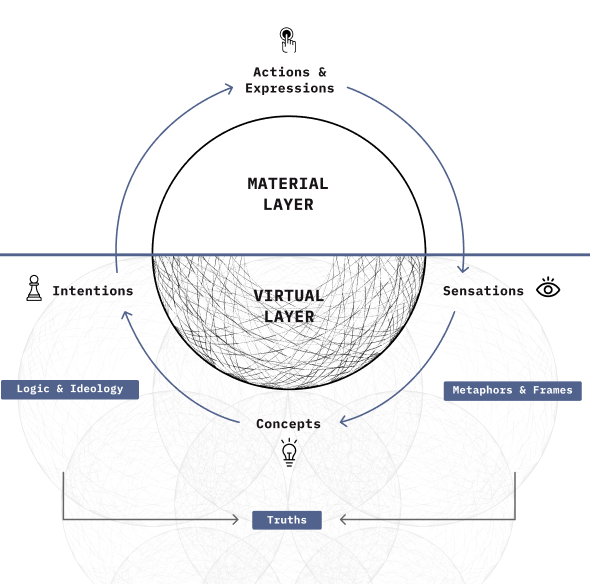
In the material (visible) layer, the actions & expressions of a narrative (such as a meme, poster, song, social media post, speech, image) are perceived as sensations (E.g. I see a meme and it makes me feel something).
Then in the virtual (hidden) layer those sensations become concepts that inform our intentions (E.g. because the meme makes me feel something, and my brain starts to make connections to my internal structure of meaning, I decide I’m going to share it through my social media). The intention to share then becomes actions & expressions again (E.g when I actively press the share button).
Let’s dive deeper into the details of this process:
Phase 1: Actions & Expressions to Sensations
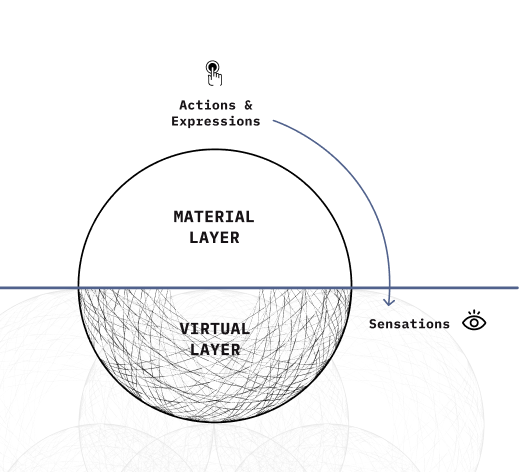
Actions & Expressions of a Narrative (such as a meme, poster, song, social media post, speech, image) are perceived as sensations.
A simple example is: I see a meme on my phone and it makes me feel something.
Phase 2: Sensations to Concepts
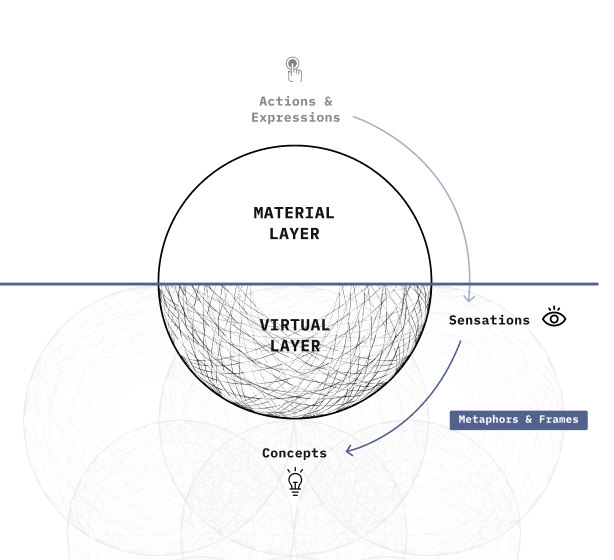
Those sensations become concepts: they are placed within a structure of meaning that exists within us relating to self and social awareness (E.g. after seeing the meme, my brain starts making connections).
We create concepts from perceiving bodily sensations through frames and metaphors. Frames are lenses through which we see the world and make sense of it. Metaphors are devices that help this sense-making – they form the basis of the frames.
Phase 3: Concepts to Intentions
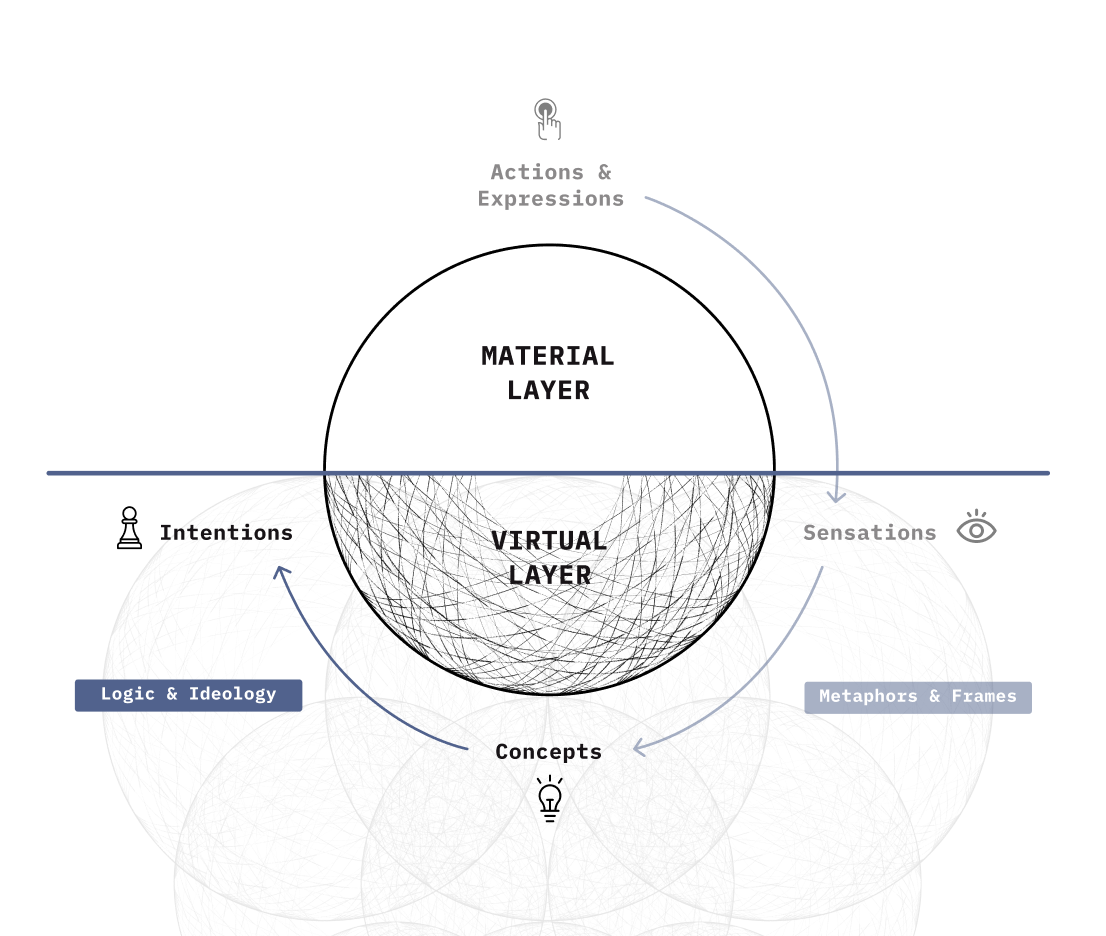
The concepts then inform my intentions which guide decisions and actions (E.g. because the meme makes me feel something, I decide I’m going to share it through my social media).
We move from concepts to creating intentions through ideological constructs and logics. Ideologies bring multiple frames into larger structured relationships. These frames are coordinated through a system of justification that contains internal logic.
Phase 4: Intentions to Actions & Expressions
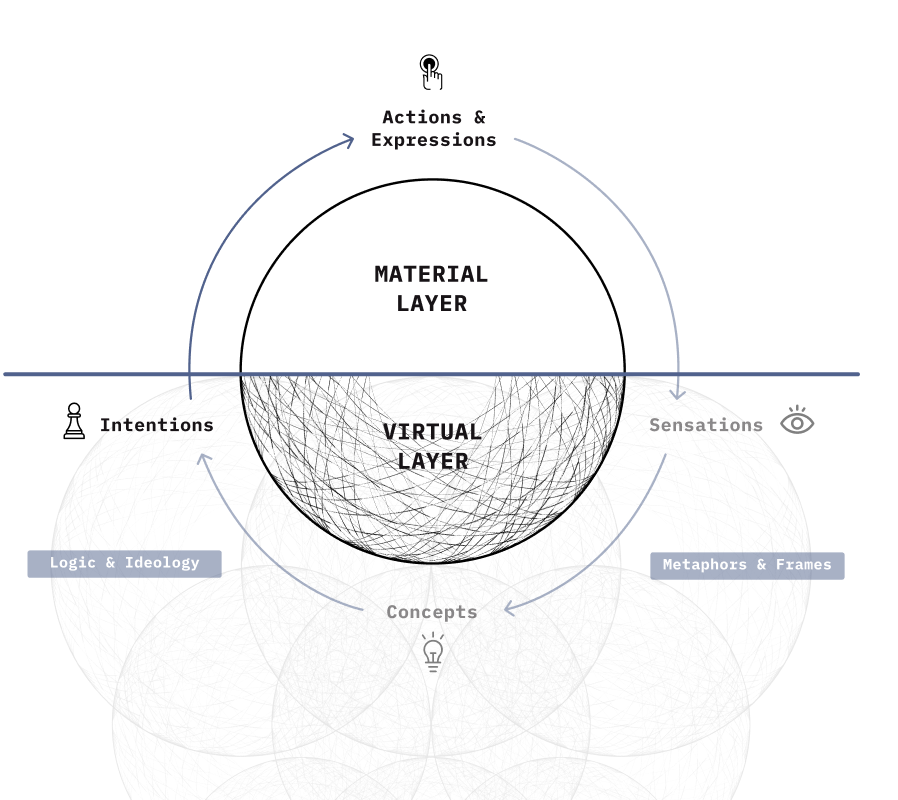
The intention to share then becomes Actions & Expressions again (E.g when I actively press the share button).
Footnotes
- Further reading on Embodied Cognition:
A seminal work on Embodied Cognition, integrating cognitive science with Buddhist philosophy and phenomenology: Varela, F., Thompson, E. and E. Rosch, 1991, The Embodied Mind: Cognitive Science and Human Experience. Cambridge, MA: MIT Press. Explores the fundamental role of the body in shaping conceptual thought and reason: Lakoff, G., & Johnson, M. (1999). Philosophy in the Flesh: The Embodied Mind and Its Challenge to Western Thought. New York: Basic Books. .